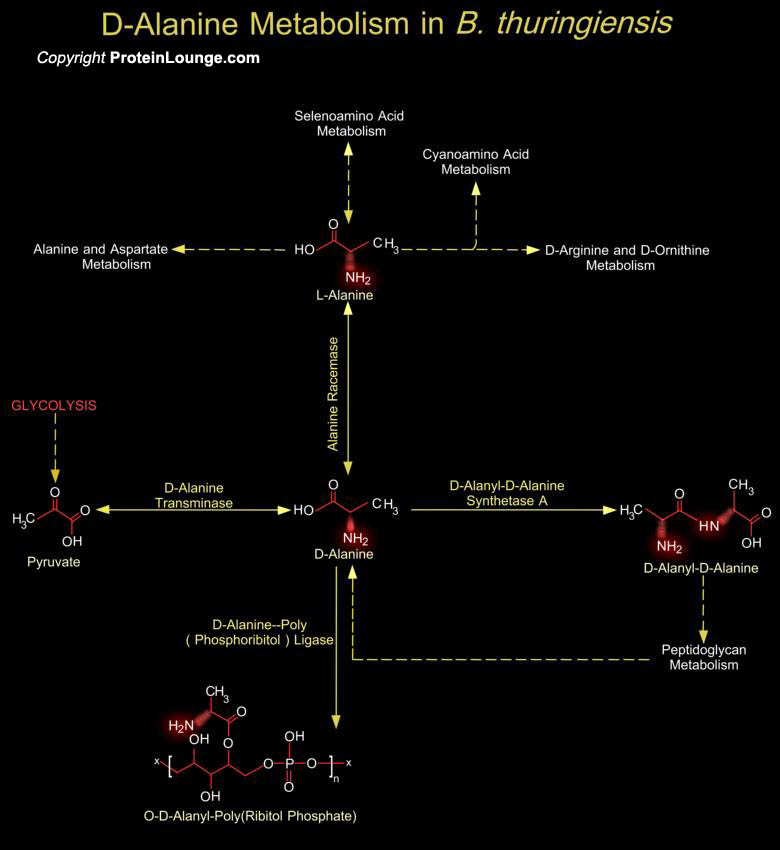
Bacilli are rod-shaped, Gram-positive, sporulating, aerobes or facultative anaerobes. Most bacilli are saprophytes. Due to the metabolic diversity in the genus Bacillus, Bacilli are able to colonize a variety of habitats ranging from soil to insects, to humans (Ref.1). B. thuringiensis (commonly known as 'Bt') is an insecticidal bacterium, marketed worldwide for control of many important plant pests mainly caterpillars of the Lepidoptera (butterflies and moths) but also for control of mosquito larvae and simuliid blackflies that vector river blindness in Africa. It produces intracellular protein crystals toxic to a wide number of insect larvae and is the most commonly used biological pesticide worldwide (Ref. 2 & 3). The cell wall of these[..]
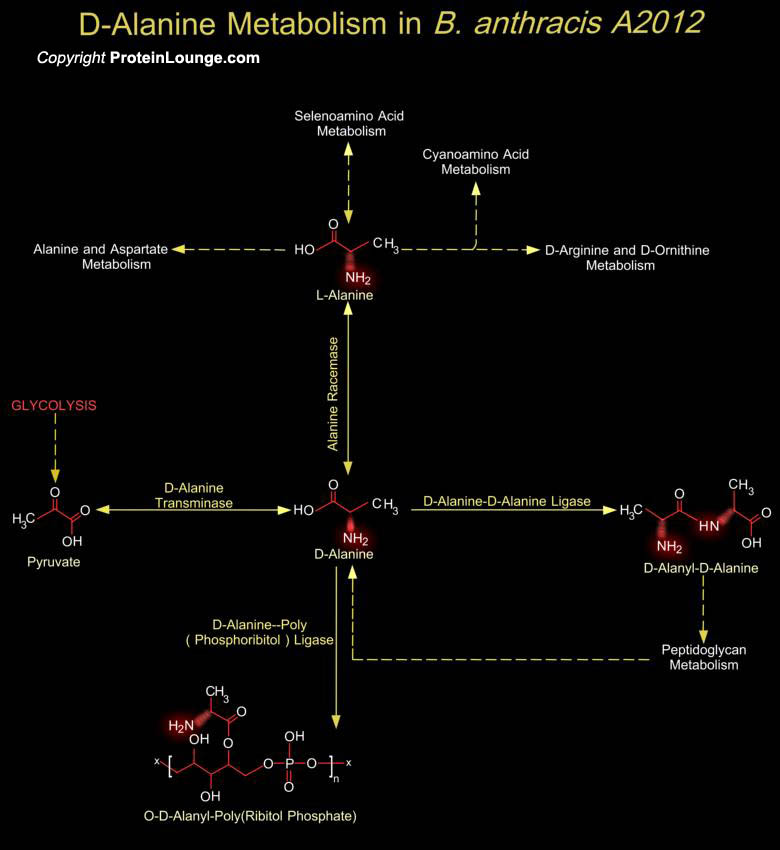
Bacilli are an extremely diverse group of bacteria that include both the causative agent of anthrax (Bacillus anthracis) as well as several species that synthesize important antibiotics. Bacilli are rod-shaped, Gram-positive, sporulating, aerobes or facultative anaerobes. Bacilli exhibit an array of physiologic abilities that allow them to live in a wide range of habitats, including many extreme habitats such as desert sands, hot springs, and Arctic soils. Species in the genus Bacillus can be thermophilic, psychrophilic, acidophilic, alkaliphilic, halotolerant, or halophilic and are capable of growing at pH values, temperatures, and salt concentrations where few other organisms can survive (Ref.1, 2 and 4). Due to the metabolic diversity in the genus Bacillus, Bacilli[..]
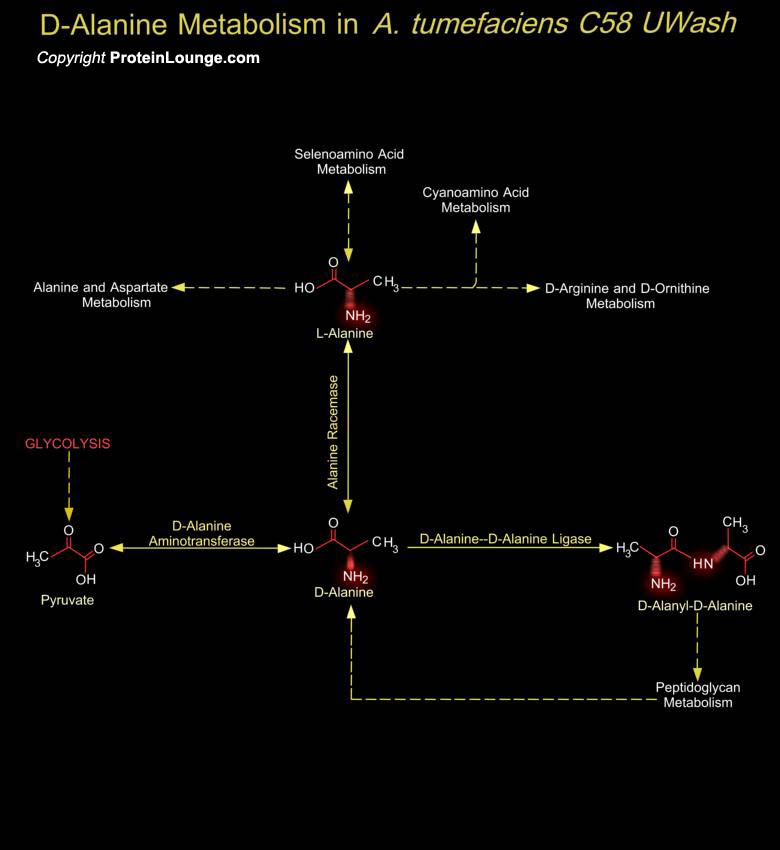
Agrobacterium tumefaciens is a Gram-negative, non-sporing, motile, rod-shaped bacterium, closely related to Rhizobium which forms nitrogen-fixing nodules on clover and other leguminous plants. A. tumefaciens causes crown gall disease of a wide range of dicotyledonous plants, especially members of the rose family such as apple, pear, peach, cherry, almond, raspberry and roses. Basically, the bacterium transfers part of its DNA to the plant, and this DNA integrates into the plant’s genome, causing the production of tumors and associated changes in plant metabolism. The unique mode of action of A. tumefaciens has enabled this bacterium to be used as a tool in plant breeding. In natural conditions, the motile cells of A. tumefaciens are attracted to wound sites by[..]
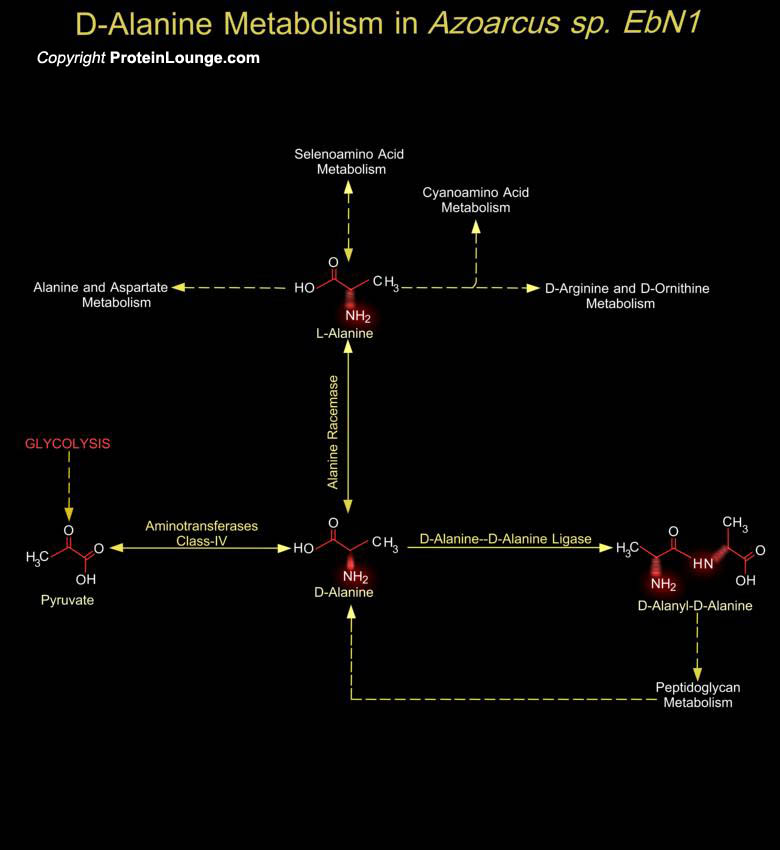
Azoarcus sp. is associated with microbial degradation of aromatic and other refractory compounds, including hydrocarbons in anoxic waters and soils. Strain EbN1 is an aromatic-degrading bacteria found in freshwater and soil habitats. A unique property of strain EbN1 is its capacity to degrade toluene and ethylbenzene via two different, strictly anaerobic pathways. The absence of nitrogen fixation and specific interaction with plants separates EbN1 ecophysiologically from the closely related nitrogen-fixing plant symbionts of the Azoarcus cluster (Ref.1). A key step in peptidoglycan layer assembly and deposition in the cell wall of Azoarcus is the subsequent enzymic cross-linking of one peptidoglycan strand to an adjacent one in cell wall growth. D-Alanine is a central[..]
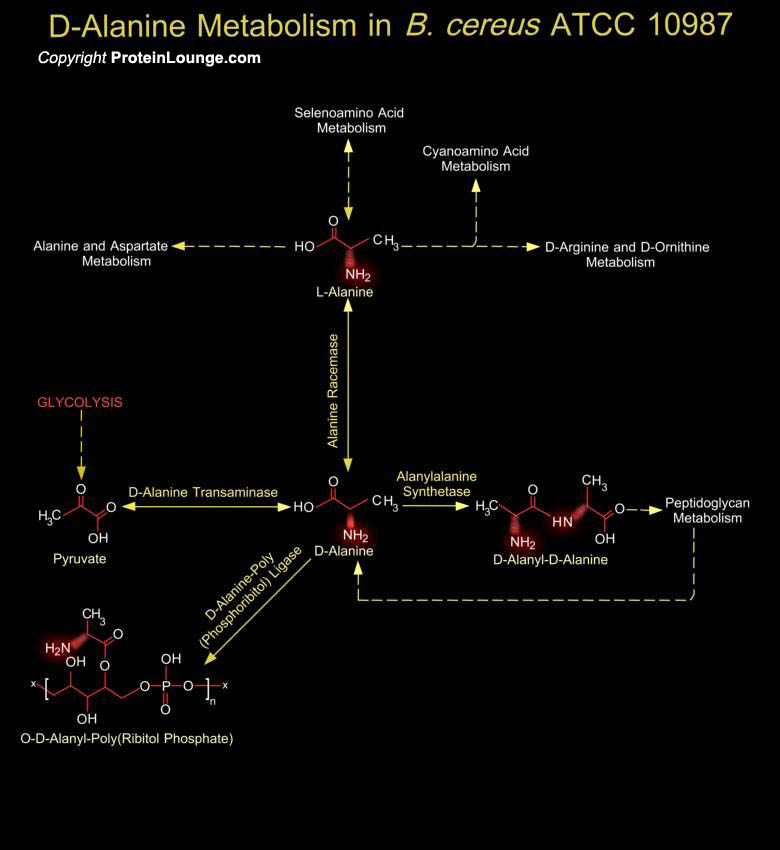
Bacillus cereus is a gram-positive, facultative anaerobic rod-shaped endospore-forming bacterium. B. cereus occurs ubiquitously in soil and in many raw and processed foods such as rice, milk and dairy products, spices, and vegetables. Many strains of B. cereus are able to produce toxins and cause distinct types of food poisoning. B. cereus is an opportunistic pathogen causing food poisoning manifested by diarrhoeal or emetic syndromes. It is closely related to the animal and human pathogen Bacillus anthracis and the insect pathogen Bacillus thuringiensis, the former being used as a biological weapon and the latter as a pesticide. B. cereus ATCC 10987, a non-lethal dairy isolate in the same genetic subgroup as B. anthracis (Ref.1&2).The cell wall of these[..]
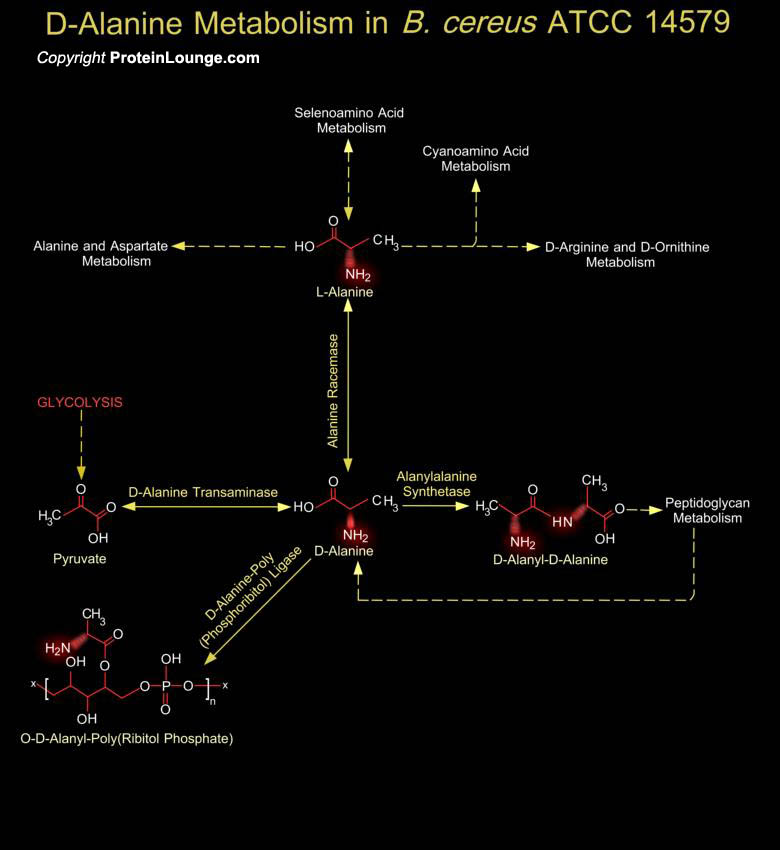
Bacillus cereus is a gram-positive, facultative anaerobic rod-shaped endospore-forming bacterium. B. cereus occurs ubiquitously in soil and in many raw and processed foods such as rice, milk and dairy products, spices, and vegetables. Many strains of B. cereus are able to produce toxins and cause distinct types of food poisoning. B. cereus is an opportunistic pathogen causing food poisoning manifested by diarrhoeal or emetic syndromes. It is closely related to the animal and human pathogen Bacillus anthracis and the insect pathogen Bacillus thuringiensis, the former being used as a biological weapon and the latter as a pesticide. B. cereus ATCC 14579, a non-lethal dairy isolate in the same genetic subgroup as B. anthracis (Ref.1&2).The cell wall of these[..]
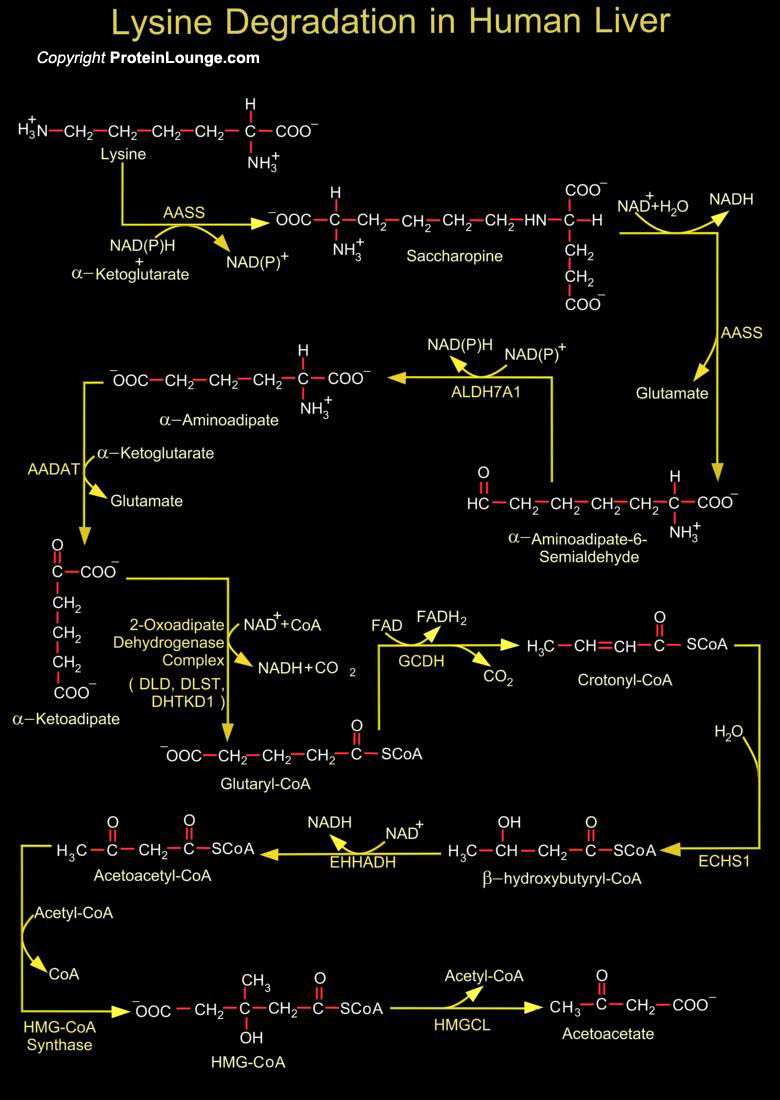
In humans, Lysine is an essential amino acid, and there is no Lysine biosynthetic machinery. However, humans do degrade Lysine. Lysine is incorporated to Collagen, one of the most important components of Connective tissue and its supply is therefore required during embryonic development and early childhood (Ref.1). It is also important for Carnitine Synthesis. The main catabolic pathway for Lysine, via Saccharopine (e-N-(L-Glutaryl-2)-L-lysine), is a mitochondrial pathway leading to the formation of Acetyl-CoA (Acetyl-Coenzyme-A). Another Lysine degradation mechanism that is the Peroxisomal Pathway, via Pipecolic Acid is of less physiological importance and is mainly active in brain. The existence of two minor pathways for Lysine degradation, the Acetyl-lysine[..]
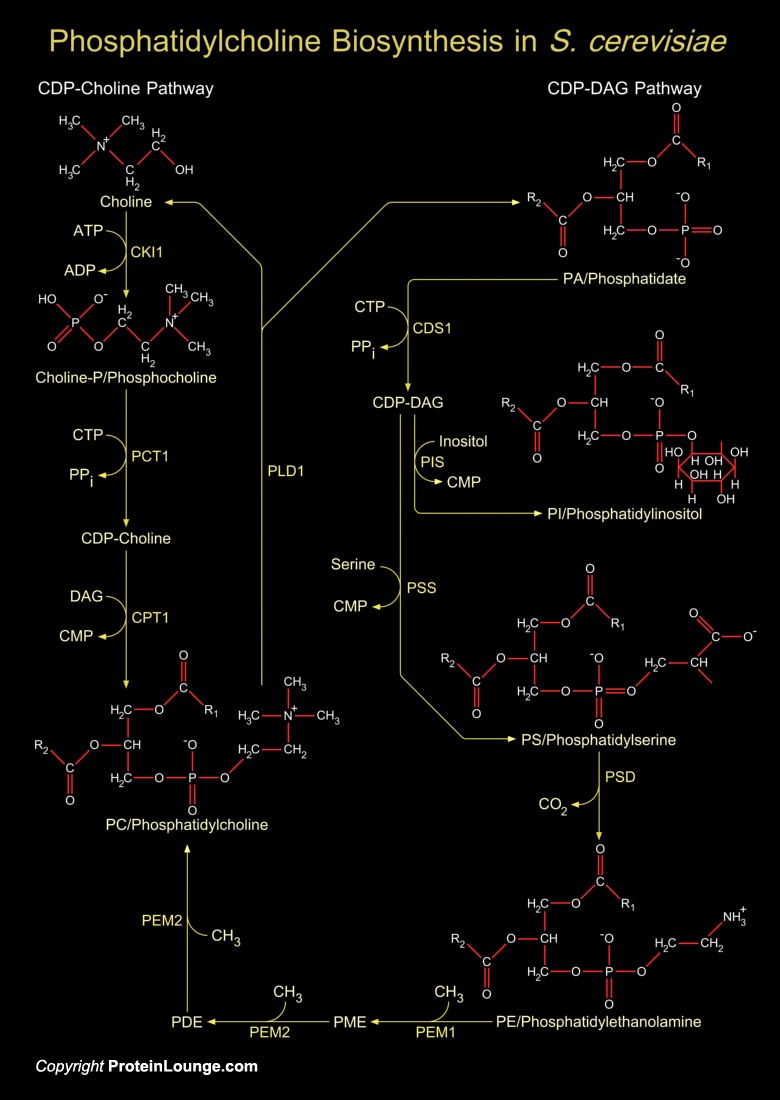
PC (Phosphatidylcholine) is the most abundant Phospholipid in the yeast S. cerevisiae (Saccharomyces cerevisiae) and the major Phospholipid present in eucaryotic cell membranes. It serves as a major structural component of cellular membranes and as a source of several lipid messengers. There are two pathways for PC synthesis in yeast, the CDP-Choline (Cytidine Diphosphate-Choline) pathway (a part of Kennedy Pathway) and the CDP-DAG (Cytidine Diphosphate-Diacylglycerol). Both pathways function to synthesize PC in wild-type cells (Ref.1). The CDP-DAG pathway is used primarily by cells in the absence of exogenous Choline. The PC synthesized by this pathway is constantly metabolized to free Choline and PA (Phosphatidate/Phosphatidic Acid) via the reaction catalyzed by PLD1[..]
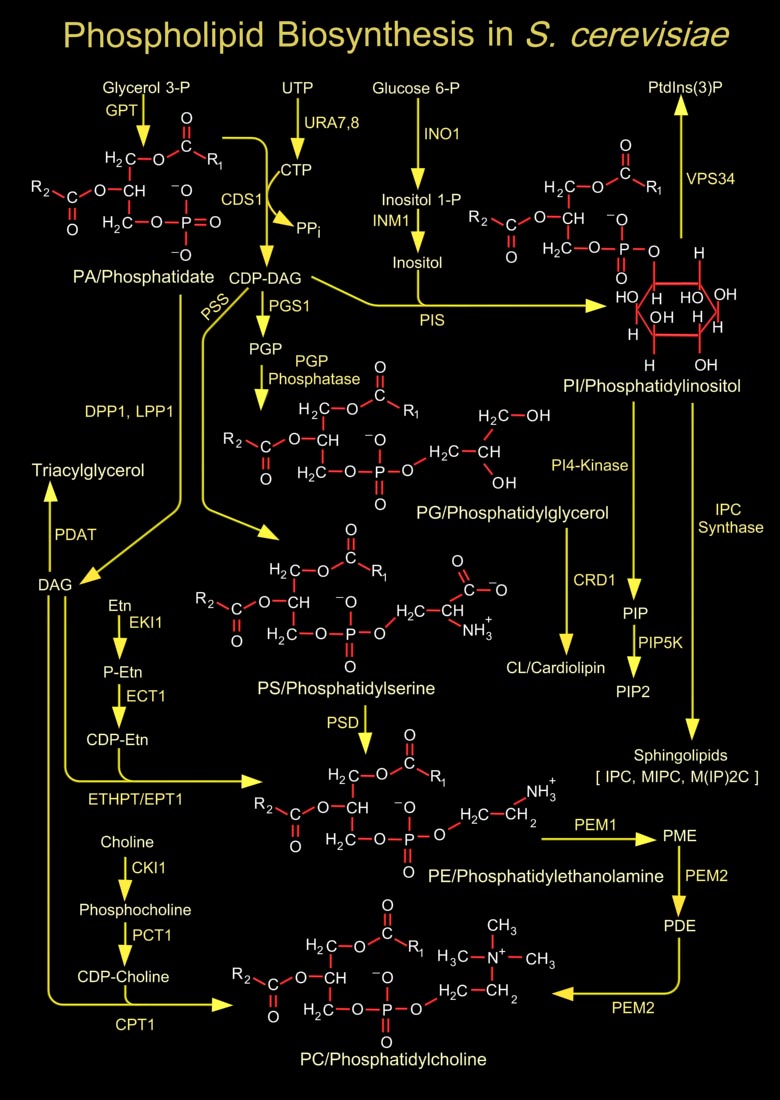
Phospholipids are key molecules that contribute to the structural definition of cells and participate in the regulation of cellular processes. The major Phospholipids which occur in the membranes of mitotically growing S. cerevisiae (Saccharomyces cerevisiae) cells are PC (Phosphatidylcholine), PE (Phosphatidylethanolamine), PI/PtdIns (Phosphatidylinositol) and PS (Phosphatidylserine). Mitochondrial membranes contain PG (Phosphatidylglycerol) and CL (Cardiolipin/Diphosphatidylglycerol). Phospholipid biosynthesis is a complex process that contains a number of branch points. PS, PE and PC are synthesized from PA (Phosphatidate/Phosphatidic Acid) by the CDP-DAG (Cytidine Diphosphate-Diacylglycerol) pathway, while PE and PC are synthesized by the Kennedy (CDP-Choline[..]
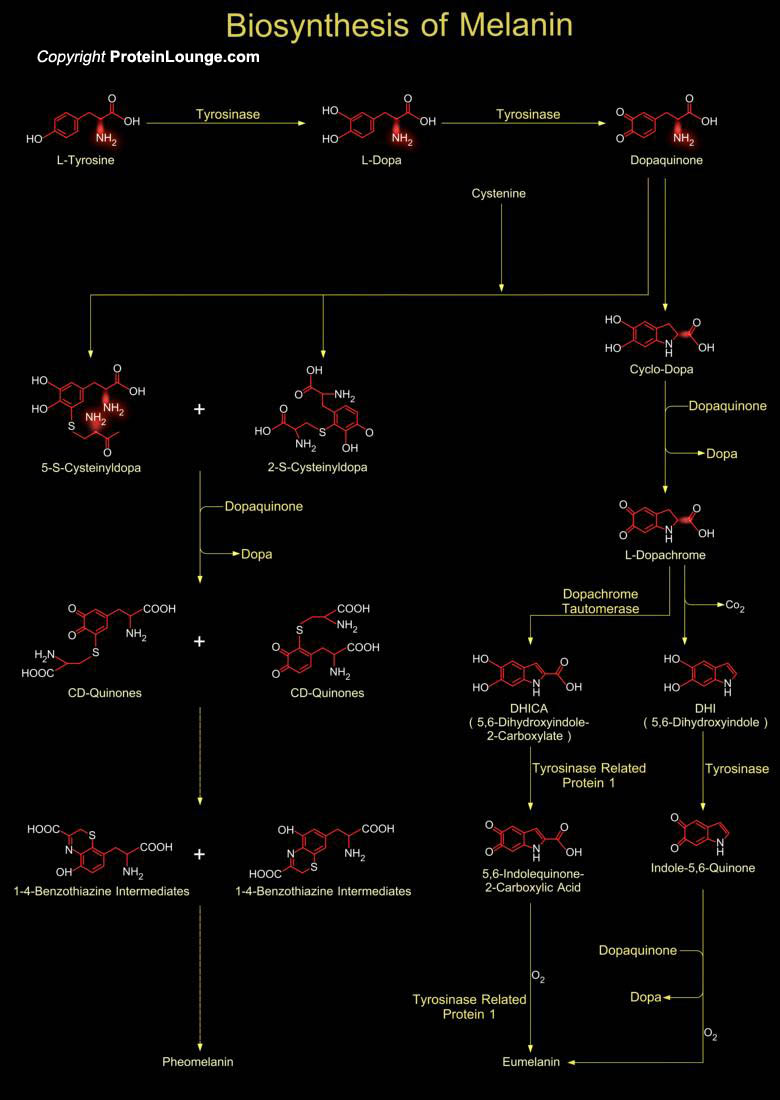
Melanins are naturally occurring pigments found in plants as Allomelanin, whereas in animals as classes of natural Melanins as the black-brown Eumelanin found in human black hair and in the retina of the eye and the yellow-red Pheomelanin found in red hair and red feathers. Melanin in mammals protects the skin from damage caused by ultraviolet radiation, acts as free radical scavenger reducing the production of reactive oxygen species (ROS) generated within the cytoplasm (Ref.1&2). Keratinocytes, the outermost layer of the skin induce a-MSH(a-melanocyte-stimulating hormone), prostaglandin, and histamine to melanocytes post stimulation by UV irradiation. This causes melanocytes to synthesize melanin in melanosome and later transport the mature melanosomes to the[..]
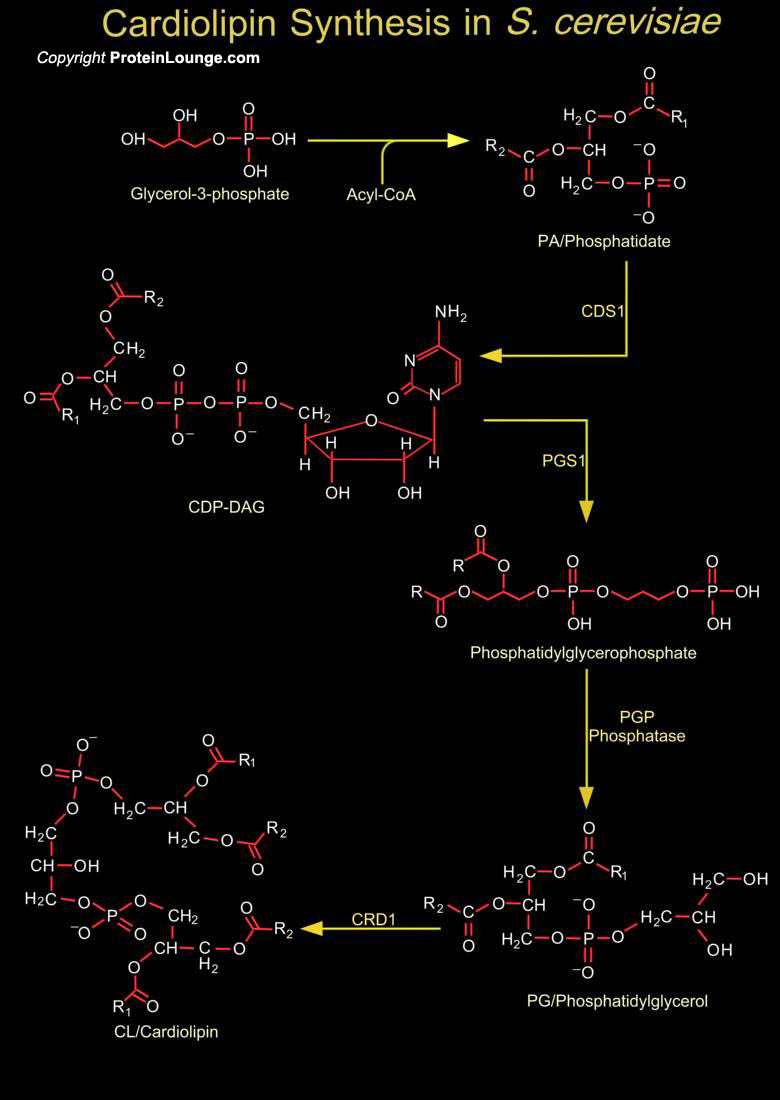
CL (Cardiolipin/Diphosphatidylglycerol) is a unique Phospholipid carrying four acyl groups and two negative charges. Chemically it is known as 1,3-bis (1',2'-diacyl-3'-phosphoryl-sn-glycerol)-sn-glycerol). CL is ubiquitous in eukaryotes and is required for activity of several mitochondrial enzymes and protein import. After the conversion of PA (Phosphatidate/Phosphatidic Acid) plus CTP (Cytidine Triphosphate) to CDP-DAG (Cytidine Diphosphate-Diacylglycerol) and pyrophosphate by CDS1 (CDP-DAG Synthase), CL biosynthesis in eukaryotes occurs in a three-step process in the mitochondrial inner membrane. First, PGS1/PGP Synthase (Phosphatidylglycerophosphate Synthase/CDP-Diacylglycerol-Glycerol-3-Phosphate 3-Phosphatidyltransferase) catalyzes the formation of PGP[..]
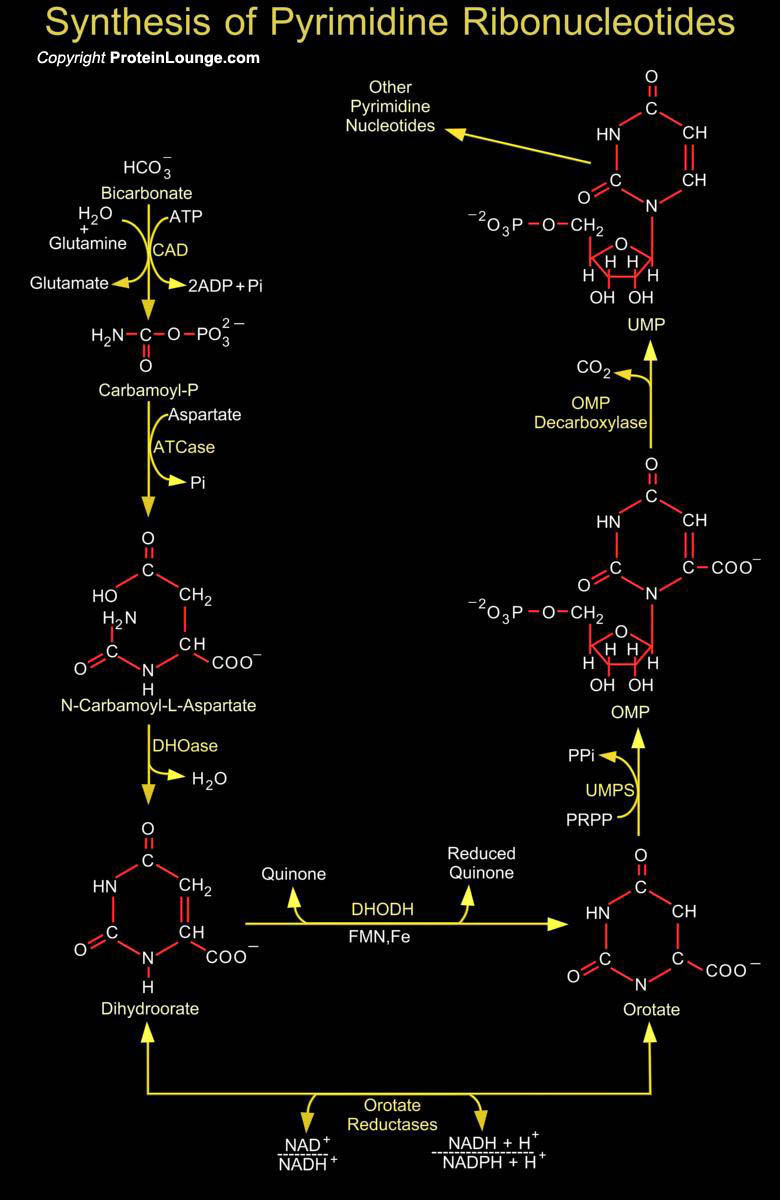
Synthesis of the Pyrimidines is less complex than that of the Purines, since the base is much simpler. Synthesis of Carbamoyl-P (Carbamoyl Phosphate) is the first reaction of Pyrimidine biosynthesis. Carbamoyl-P is formed from HCO3- (Bicarbonate) and the amide nitrogen of Glutamine by the cytosolic enzyme CPSase (Carbamoyl Phosphate Synthetase). This reaction consumes two molecules of ATP (Adenosine Monophosphate): One provides a phosphate group and the other energizes the reaction. Then condensation of Carbamoyl-P with Asp (Aspartate or L-Aspartate or Aspartic Acid) occurs to form CAA (N-Carbamoyl-L-Aspartate) which is catalyzed by ATCase (Aspartate Carbamoyltransferase). This reaction is the flux-generating step and occurs without need of ATP because Carbamoyl-P is[..]

